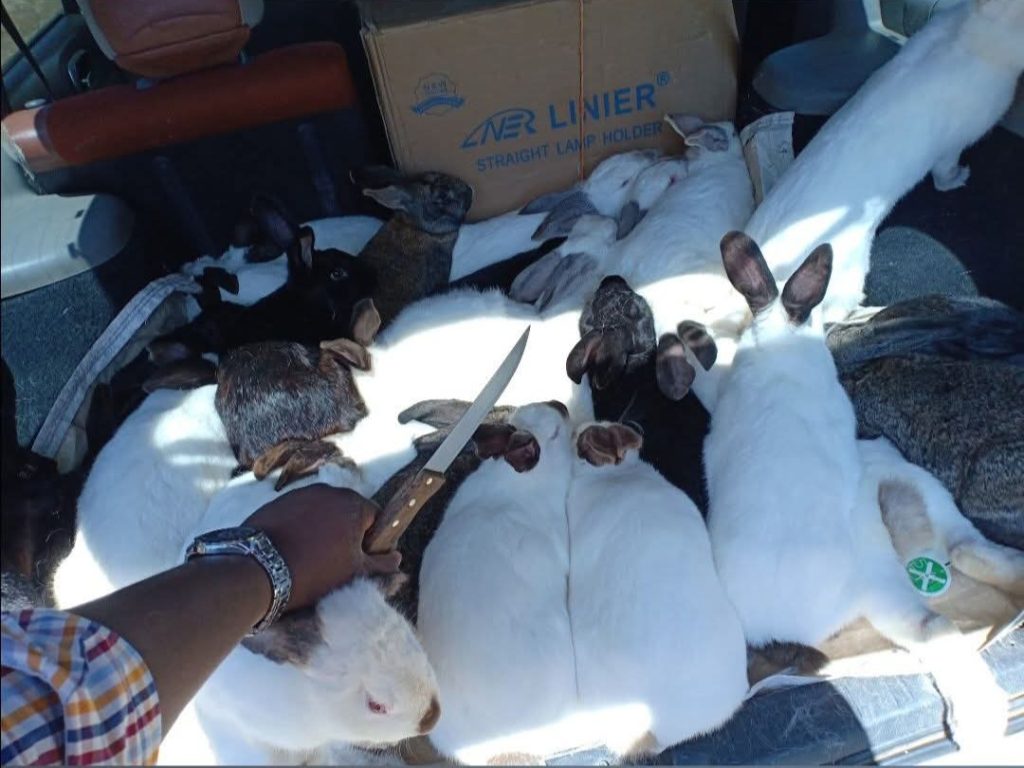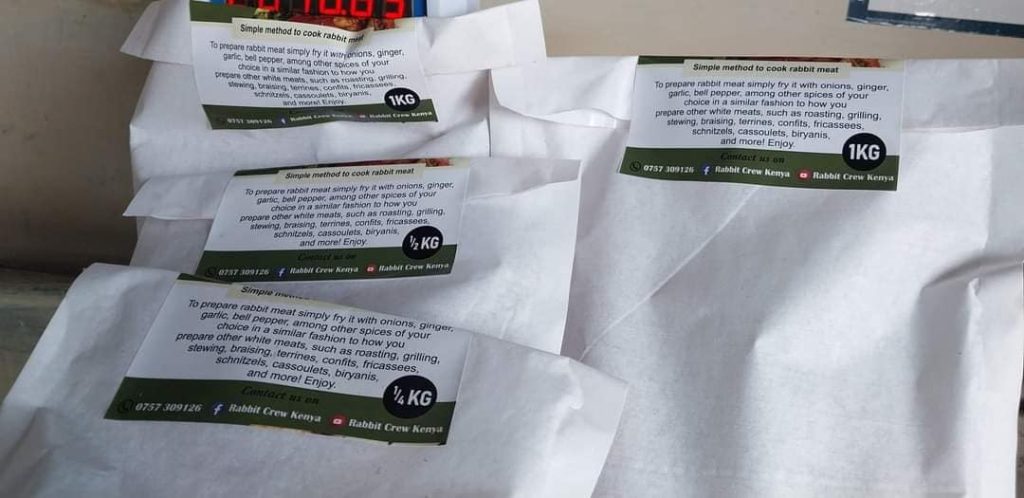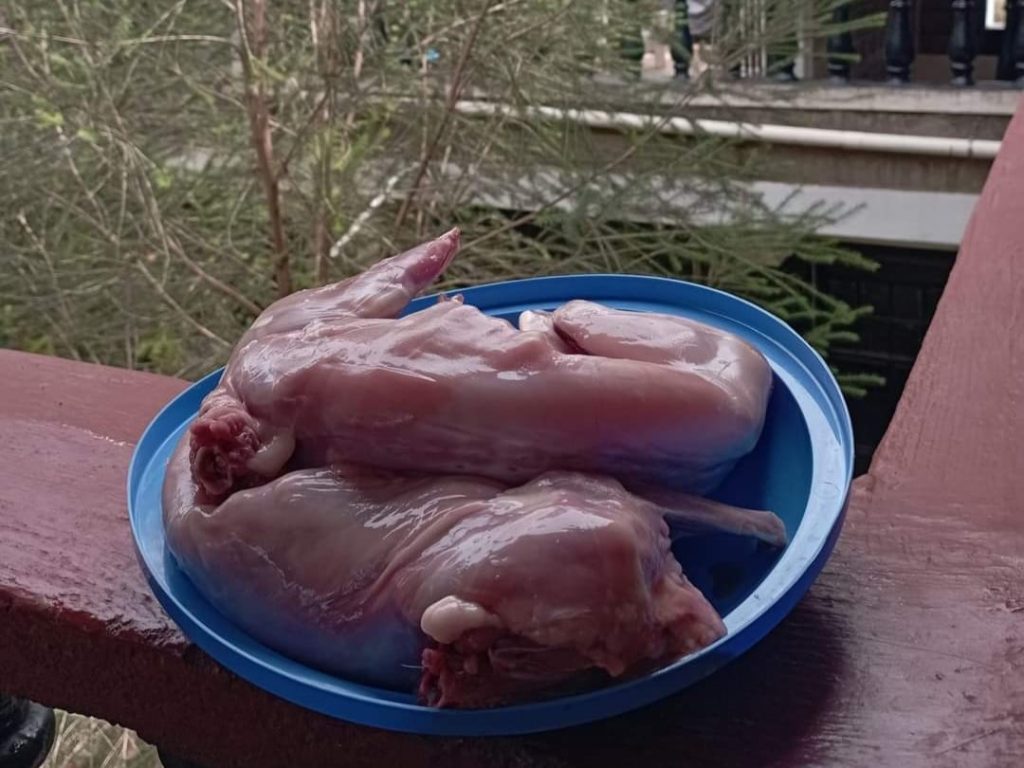Introduction
A common trend in the Kenyan agribusiness sector is the rapid entry and exit from emerging ventures. In the last decade, rabbit farming, like quail farming, notably saw a wave of interest, with early pioneers promising quick profits and then abandoning farmers after merely selling capital to them and vanishing. It’s important to clarify that you won’t get rich quickly from rabbit farming, just as you wouldn’t expect sustainable, quick returns at a small scale from keeping chickens or growing maize or cabbages, despite the differences in market dynamics between these commodities.
Some sectors are easier to market than others; however, rabbit farming presents unique challenges. The typical Kenyan farmer often relies on structured markets and may find it difficult to navigate the complexities of the currently unstructured rabbit market. At Rabbit Crew Kenya, we are committed to overcoming these challenges, supporting rabbit startups with our experience whenever needed, and working alongside determined individuals or organizations to grow the rabbit industry.
With that said, let’s dive into a realistic yet optimistic discussion on how you can turn rabbit farming into a viable and profitable venture through scaling up, selling rabbit meat, and by time & strategy.
Understanding the Rabbit Market in Kenya

“Where is the rabbit market?” is the most common question we receive from anyone interested in keeping rabbits as a business.
The truth is, the rabbit market in Kenya is still in its infancy. Unlike more established livestock industries like chicken, beef, and dairy farming, rabbit farming lacks widespread consumer recognition and structured retail markets. This is similar to how consumers widely accept cow milk but are less familiar with goat milk. Such non-mainstream agribusinesses present both a challenge and an opportunity for those willing to invest in their growth. Even in niche industries like these, a few dedicated players can still make a full-time living, even if the market is not yet mainstream. Just as you can find broccoli or red cabbage in select supermarkets, even if they’re not grown by your everyday neighbor, the same dynamic of potential, strategy, and place value exists for rabbit farming.
The rabbit meat market in Kenya is under-produced, under-developed, under-demanded, and under-supported. This is the reality faced by the few actors currently involved (in a tightly closed ecosystem), most of whom treat it as a side-hustle. To succeed, they employ strategies such as consumer education, market development within the farmer community (using tools like social media), and collaboration with existing slaughterhouses, fellow farmers, or farm-level meat processing. These efforts contribute to gradual and steady growth, with many businesses achieving sustainability after 3 to 6 years, save for any farmer that plugs in to a structured format of the business where they can sell off everything to a middleman and skip the retail marketing process.
Common products sold include rabbit breeding stock (which 90% of smallholder farmers prefer), rabbit meat, rabbit urine, and other related products and services that support the business as a diversified enterprise, where farmers can essentially “sell everything” from their rabbit farm. However, in practice, most farmers will find success with a few of these products and services initially, depending on where they focus their marketing efforts.
If you want to participate in this market, you’ll need to adopt a similar approach, building on the work we’ve done so far alongside existing rabbit farmers in Kenya. Alternatively, you could sell to a broker with established market access, earning a profit margin ranging from 25% (for the highest urban farmer margin, who buys all feeds) to 75% (for a rural farmer with minimal costs, growing hay on freely accessible arable land). These margins are typical for most middlemen in the Kenyan market as of the writing of this article.
Alternatively, if you’re not directly involved in farming, you can take on a more strategic role by targeting the retail side of the business. Become a key player who connects farmers to consumers of rabbit meat, offering market access and developing a structure for the Kenyan market that enables farmers to plug into production systems and scale up with confidence. Currently, 95% of farmers in Kenya are either unwilling or unable to scale beyond managing fewer than 100 rabbits at a time. The urban farmer spends Ksh 400 to raise a kilogram of rabbit meat, while the rural farmer spends Ksh 250 per kilogram, supplementing with fodder from their arable land. By growing their own hay, greens, and grains, rural farmers can slightly reduce their cost of production by decreasing their reliance on commercial pellets.
In the market today, the most common broker price is Ksh 500 per kg of meat, offered by the largest brokers. A few competitors price their meat between Ksh 550 and Ksh 600 in order to secure supply from the larger competing brokers. At the retail level, prices range from Ksh 700 to Ksh 900 per kg, with rare cases where sales approach or exceed Ksh 1,000 per kg. Cooked rabbit meat, typically sold in hotels, averages Ksh 1,500 per kg together with other accompaniments on the menu.
From the foregoing, and considering a 4 month production cycle that we previously suggested here as a best production practice, then, the worst case scenario of profitability is 100 sh per kg for the urban farmer who has the highest cost of production. The 100 sh is realized after 4 months, meaning their monthly profit is ksh 25 per kg of meat raised. The direct feeding cost of feeding the rabbit being ksh 400 per kg of meat raised, that translates to an expenditure of 100 sh per month per kg of meat raised. The farmer’s revenue per month is ksh 125 with the 100 sh as re-investment back to the business to raise the next kg of meat in the next litter, and take-home profit as ksh 25 per kg of rabbit meat per month raised.
With 25 ksh per kg per month as the actual monthly profit, let’s break down what the farmer who desires to have a revenue of Ksh 100,000 will need to sell per month. This farmer will need to keep 100 Does, and 300 hutches. Each Doe needs 3 hutches in total to house itself and kits, then the other two its offspring, housing males and females apart. The normal distribution of rabbit kits is 5 to 9 per Doe. Again, working with the worst case average scenario of 5 kits per Doe (skipping outliers of less than 5 kits), the 100 Does yield 500 kits every 4 months (and 3 harvesting cycles back to back per year). The 500 kits yield 1.3 kg of meat per rabbit of 4 months x 500 = 650 kgs of meat every 4 months. The monthly sales can then be thought of as 650/4 = 162.5 kgs per month.
There are two paths to profitability here: first, is the farmer who sells to a broker at 500 sh per kg. Second is the farmer who goes retail at about 700 ksh to 900 ksh per kg. We again handle the worst case scenario of the farmer looking to avoid retail market and again plug in to the structured broker market. The 650 kgs of meat sold to a broker at 500sh, against a 400 sh per kg production cost yield a profit of ksh 100 per kg x 650 kgs after 4 months – Ksh 65,000 and a grand revenue of ksh 325,000, the bulk of their farm cash flow to buy feeds for the next litter. Divided by four, the monthly revenue is ksh 81,250, while the actual profit is ksh 16,250 per month.
This represents a desirable profit margin of 25% every 4 months but one that does not seem substantial for all small holder farmers as despite the attractive percentage profit, 95% of the rabbit farmers do not keep 100 Does and 300 hutches. All are small holders. Hence, the previously discussed path of selling breeding stock at a lucrative price of between ksh 1,500 to Ksh 8,000 as a very high income alternative than selling meat. However, we posit that it is not sustainable for the larger producing farmer to sell all the 650 rabbits as breeders, as out of the 650 kits born, say 300 males and 350 females or vice versa, you can only sell no more than 40 males, as a farmer needs only 1 buck for every 10 Does sold. The 250 males must then find their way to the meat market. The calculating urban farmer will be seen here selling a bulk of their rabbits as breeding stock, and disposing the males to the broker at the thinner profit margins, and remaining highly profitable as a small holder farmer still.
An argument can be made here that breeder-to-breeder business does not validate the value of the rabbit, whose selling point is the value of its meat. The small holder farmer can make the profit in breeder sales at sub-50 hutches that a 300 hutches farmer struggles to make with purely meat sales. The consequence here has been that whenever the farmer thinks of the broker asking for rabbit meat at prices never near breeder prices, they quickly brush them off as buying poorly, in comparison to the very high breeder prices they have previously enjoyed. The farmer in business thinks return on their investment, and they often get stuck at breeder business, and thus the farmer remains uninterested to develop the poorer meat market compared to the breeder market. The result is a cycle of limited market demand as the rabbit farmer produces rabbits targeting the other rabbit farmer but not on expanding consumption. The only farmer who can scale and sustain their rabbit business is then the farmer who goes beyond this comfort zone and targets the meat market, despite the leaner profit margins. The strategies applied to obtain breeders customers can be applied to obtain meat customers and grow the demand for rabbit meat from that particular farmer, and in extension, to other farmers near them willing to sell their rabbits as meat as well.
So, what is the way forward? We can naively allow the market to become saturated with the breeders, at which point the market will pivot towards meat sales when a farmer can no longer easily sell a breeder to another farmer. Alternatively, we can start building up the rabbit meat consumer market who are the actual intended consumers of the output of all these breeders sold. A rabbit produced and eaten promptly, creates a gap in the market to produce and sell again, as people will always eat whenever rabbit meat is their choice. The breeder market is best utilized as a crutch to obtain capital to build up more hutches to eventually start a large scale meat production business. The rabbit business is best validated via meat sales, as that is historically the value of domesticating a rabbit for food. Notwithstanding, other revenue streams remain acceptable as the breeders, urine, manure, training, infrastructure setups, and overall capital selling, but once the market shall be saturated of all these, it is the rabbit meat that shall remain king of all matters the rabbit business.


Quiet detailed Master piece.
Much welcome Elizabeth! Good luck in your rabbit agribusiness.
Həy. I’m a rabbit farmer and would like an advice from you guys.
Hi Gabriel! What kind of advice are you seeking?
Nice details
Hi Brighton. Glad to hear that the article was helpful to you.
Kirinyaga gicugu(Kenya)
Hi Kevin! Reach us on +254757309126
I have some rabbits for selling
Where can I get some rabbits to start with? I’m in Migori.
Order from us via +254757309126
Nice information am starting this business soon in nyandarua County…
Wishing you success Sir!